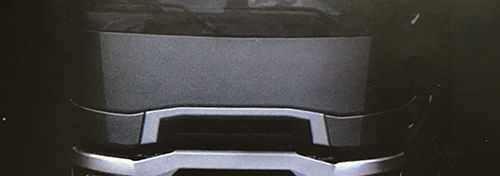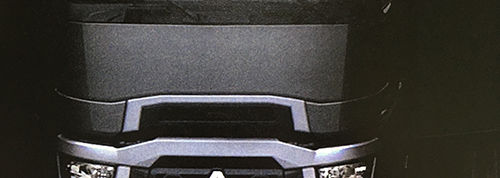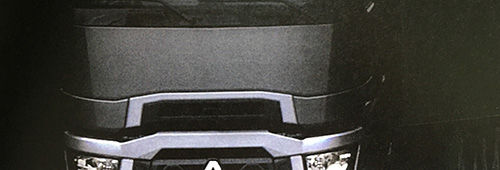PAPER SELECTION FOR MAGAZINES
Digitisation, smart phones, WhatsApp & Co. speed up our world. Nevertheless (or because of that), haptic experiences are in demand more than ever. For publishing companies, this means to focus even more on the paper their magazines are printed on. Paper is not dead - on the contrary.
I interviewed Uwe Bräutigam, CEO of the Barometer publishing house in Leipzig/Germany, and asked him about paper selection for magazines. After the interview you can read about my personal experiences with this topic.
INTERVIEW WITH UWE BRÄUTIGAM
HCG: Why did you choose a new magazine layout design for "Dental Barometer"?
Uwe Bräutigam: The dentists in Germany are quite conservative and it takes a lot for them to accept changes. Nevertheless it‘s necessary to adapt to how the market is. After nearly ten years of Dental Barometer undergoing some visual amendments, it was time to outstand from the "glut in the special interest magazine market" in Germany. Dentistry is becoming more aesthetic because patients demand it. The same accounts for dentists who appreciate high-quality products and services. Having that in mind and the fact that it was simply time for a change, we decided to give Dental Barometer a facelift. The feedback from readership and industry alike confirmed that we made the right decision.
HCG: The magazine is printed on another paper since the relaunch. What criteria did the paper have to fulfill for you? What paper did you choose to go with in the end?
Uwe Bräutigam: The paper had to fulfill two requirements. Firstly, it had to have a higher haptic value, this is why we went for a cover with 300 g/m² and the inside is printed on a 115 g/m² paper. Secondly, the inside paper had to display photos and graphics in better quality. This is why we chose an almost wood-free, matt coated paper for the inside.
HCG: How did you choose the paper? Were you consulted, were there maybe test prints?
Uwe Bräutigam: The paper selection had a lot to do with experiences with similar papers, personal consulting and of course test prints.
HCG: What advantages and disadvantages do you see with the new paper, compared to the old paper?
Uwe Bräutigam: The magazine looks higher quality, thus is of higher value, and it was partly even perceived as a new magazine after these changes. The disadvantage is a higher weight which means risen costs with regards to production as well as postage.
HCG: How did your readers and advertising clients react to the new layout?
Uwe Bräutigam: Throughout positive. We received a lot of positive feedback from the readers and the advertising clients.
HCG: Do you think that advertising clients are willing to pay higher prices if a magazine is printed on a higher quality paper? Possibly higher production costs have to come in from another side, no? How do you see that, what are your experiences?
Uwe Bräutigam: Generally speaking, it‘s difficult to ask for higher prices among the advertising clients because the competition in this segment is too big and available budgets tend to become shorter. You can achieve better prices by extending your circulation and this takes some time to establish after such a re-design; and most of all, it has to be traceable.
HCG: In 2018 you will change from printing on a 115 gram paper to a 100 gram paper for the inside of the magazine. Why that?
Uwe Bräutigam: Indeed, 2018 we switch paper in order to reduce costs. Additionally, we slightly change the magazine‘s format, but people won‘t realise that in terms of layout and amount of content. We also switch to another German printing company, so all in all we will be able to reduce the production and postage costs by a four digit number per issue. We comply with changing market circumstances and mostly sinking budgets.
HCG: Many thanks for the interview, Mr. Bräutigam.

ABOUT THE BAROMETER PUBLISHING HOUSE
"Dental Barometer" - the special interest magazine for dentistry and dental technology - is being published throughout Germany since 2006. It covers stories about all aspects of dentistry and dental technology in step with actual practice. A circulation of 41,000 copies (proved by IVW) makes it one of the biggest special interest magazines in dental technology in Germany.
MY PERSONAL EXPERIENCES
In summer 2017, Austria‘s largest transport magazine (Blickpunkt LKW&BUS) underwent a relaunch. I was responsible for the creative direction and all graphic design aspects. In the course of the relaunch, it of course made sense to overthink the topic structure and picture usage. The paper was taken into consideration as well.
In the past, the magazine has always been printed on matt coated paper. In order to establish a higher quality in terms of haptics, I ordered test prints on two different uncoated papers: Claro Bulk 90 g and Amber Graphic 90 g. The paper weight (90 g) should stay the same as the paper always used (also 90 g), so to eliminate any rising costs in production and/or postage upfront.
Uncoated papers tend to make pictures look a bit darker than on coated paper, because the raw, "open" fibres soak up more ink than coated paper does. However, this also results in a longer drying process which lengthens the production time and could maybe generate extra storage costs by the printing company.
The test prints showed that both uncoated papers made photos look a bit "cloudy":

paper always used,
matt coated

Amber Graphic,
uncoated paper

Claro Bulk,
uncoated paper
(You can see a slight tint of creme in the paper colour.)
This is a minus point for the advertising industry in this business sector, as advertisements, colours and pictures must look top-notch when printed. This made the publisher‘s decision easy to stay with the matt coated 90 g paper as always used.
You can also download this interview as a free whitepaper.
When printing on good paper, white space can be a very nice design aspect.